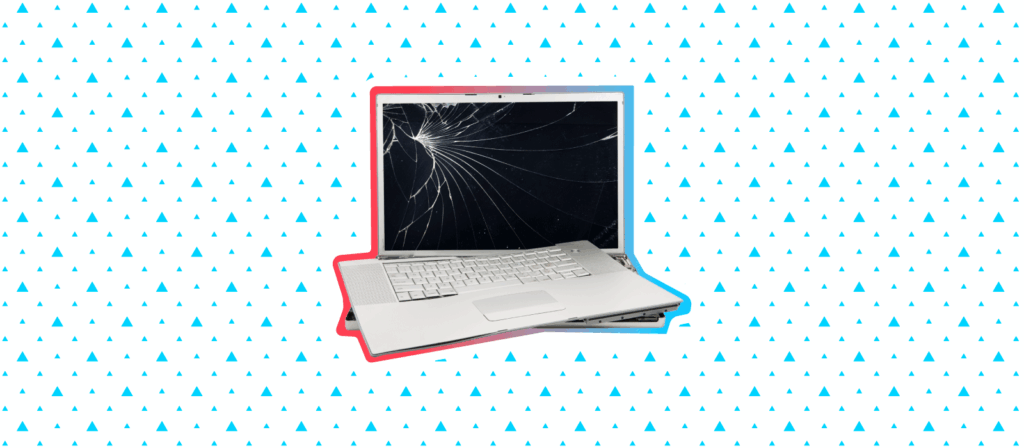A connected workplace, where all employees have access to everything they need in one shared and centralized digital space, is quickly becoming a prerequisite for both profitability and employee well-being.
Companies need to figure out how to keep their teams connected via an easily accessible single platform. Especially as we move to hybrid work and flexible new work environment types.
In this article, we explore the benefits of a connected workplace. We also review specific technology and policies that can lead to a happier, more connected workforce.
What is a connected workplace?
In the 90s, an office excited to get their first dial-up connection might boast about being ‘connected.’ Of course, connected workspaces now encompass so much more than a simple Internet connection!
Specifically, when we talk about a connected workplace today, we’re talking about a workplace that uses technology to centralize work, foster connection and collaboration, and ensure all employees have access to the people, resources, and information they need, no matter where they’re working from, or when.
Only by building a well-integrated digital ecosystem can companies improve both the hybrid workplace and the employee experience. Creating a connected workplace is about embracing both the workspace and digital transformations that are changing the way we work, along with the way we think about work. This in turn is what leads to more productivity and innovation in the workplace.
The difference between a connected workplace and a digital workspace
Note that some use this idea interchangeably with the ‘digital workspace,’ but there’s an important distinction. A good digital workspace is not inherently a good connected workspace. Creating a digital workspace is an essential first step in creating a connected office space. But only when this is done with the right goals, policies, and technology.
Namely, we’re not just talking about being able to get onto the employee intranet when you’re working from home. Creating a connected workplace is about understanding that work now can and does take place from anywhere. And that workers who are always in the office have the same technical requirements as those who always work remotely.
Flexibility is key to creating a connected workspace.
Asya Stamenova, Lumapps
In short, all employees need real-time digital workplace solutions that keep them linked together and to resources they need. This is whether they’re in the office, working remotely, or a hybrid employee toggling between the two. Moreover, these workplace solutions need to be central, on the cloud, and easily accessible via mobile app. Moreover, they need to be part of a larger company-wide commitment to collaboration and employee experience.

How can we make the workplace more connected?
Workplace connection is about removing all barriers—including distance—between all workers.
So perhaps not surprisingly, creating a more connected workplace often starts by connecting Information Technology (IT), Human Resources (HR), and Facility Management (FM) teams. Collaboration in the workplace between these once siloed departments can lead to information and idea sharing, along with better implementation of any new technology or policies.
Once IT, HR, and FM teams are working together with shared goals, they can start to advance a workplace that better connects all team members.
Plus, breaking down barriers between these departments can be a model for everyone else in the office, creating a flexible work culture that is more synergistic and hopefully more likely to embrace any tools that can improve the workday. It’s always a plus when mindsets shift from ‘my department’ to ‘our team.’
When employees have to struggle to make technology work for them, they lose the desire to innovate or think outside the box and their productivity goes way down as a result. Companies need to focus on removing the technology barrier in order to support natural, productive conversations.
Andrew Border, Computerworld
Each company will have to create its own systems and workflows, of course. However, creating a more connected workplace usually comes down to two critical areas: technology and employee experience.
Use the right technology
Using the right technology is critical to creating the right workplace. In fact, a recent comprehensive workplace survey finds that 49% of US workers say they are likely to leave their job if they experience frustration with the technology solutions. And 32% actually have left a company where they felt technology was preventing them from doing good work.
Thankfully for anyone looking to enhance workplace collaboration and connectedness, most new technology in the workplace is does exactly that. In fact, spurred on by the sudden shift to remote work thanks to the pandemic, many companies are already using some of the tools that help create a more connected workplace.
Specifically, the right technology for fostering workplace connection generally falls under one of the following categories.
Collaboration tools
Collaboration was much easier in the days of shared offices and water coolers. Today, even in traditional offices where most people are working face-to-face, a good deal of work takes place online.
We’ve also learned from the pandemic that the unexpected can happen, and companies can be forced into remote work overnight.
And of course, the digital transformation means that even traditional workplaces may be working with clients, vendors, or satellites in other offices (and maybe even other countries).
All added up, this means that even small or traditional offices need technology solutions that make real-time and asynchronous communication and collaboration easier.
This can look like email and a company intranet, of course.
Companies may also take advantage of cloud-based software solutions. This can include Google Suite. And options like Slack and Microsoft Teams are the modern (and often more effective) answer to the water cooler of yesterday.
Collaboration apps are changing the way people work, and it’s about time.
Jill Duffy, PC Mag
And of course, hybrid meetings can’t take place without software like Zoom or Google Meet.
Workplace management tools
To realize its true potential, a connected workplace needs to simplify and improve all ways of working. This includes the physical office. That’s why it demands robust workplace management software that can accommodate (and grow with) a flexible work environment.
Since hybrid employees often treat the physical office as their go-to place for collaborative work, offices need to be equipped with well-planned meeting rooms, plus meeting room booking software that makes them easy to access.
Meanwhile, good desk booking software is the key to optimizing any flexible seating arrangement. And therefore, making the office a more useful and usable place, even and especially for those on a hybrid schedule.
These booking solutions can also be enhanced by using cutting edge technology like IoT sensors that can detect when a room or desk is in use. This introduces a level of automation that can simplify workplace strategies like free addressing and office hoteling.
And of course, some companies will have their own unique situations and shared spaces. These also need to be easy to use. For example, some OfficeSpace clients use our space management software to let their clients reserve parking spaces. And some biopharma companies use it to book lab equipment.
Ideally, these booking solutions will be available on an easily accessible app that also gives workers a window into where their coworkers are at any given moment. This therefore provides essential visibility into their whole workspace.
And ideally, companies will also enhance them with good wayfinding solutions. This includes digital wayfinding signage and a comprehensive visual directory that can help everyone better navigate the office.
Connectivity is key
In a nutshell, it needs to be easy to book a desk, room, or other essentials without having to set foot in the office. And it needs to be easy to find and access the people and resources you need to do your job well—no matter where you’re working from. This connects the physical workspace with the digital workspace, therefore improving both and leading to a much better workplace experience.
Almost half (49%) of US workers say they are likely to leave their current job if they’re unhappy or frustrated with the technology they use at work.
Eileen Brown, ZD Net
Space management tools
Finally, IT and FM teams that are looking to truly maximize the connected workplace need the right insights. It’s only when armed with the right workplace analytics that they can make data-driven decisions to continually improve their office.
For this reason, any software that is used to create a connected workplace should also be collecting space utilization data. This data tracks how every inch of the office is actually being used by workers. This can help to better calculate room capacity, as well as to allow for more effective headcount planning.
In turn, gathering this data can help managers understand what improvements are actually needed to create a more connected workplace. For example, this data may highlight an empty meeting room problem, while also highlighting if the issue is due to poor meeting schedule software, or because the meeting rooms themselves are not the types of collaboration spaces employees really need.
This data can also lead to better scenario planning and stack plans. These tools make it easier to plan for any new configurations as needed.
Unite employees
Of course, companies need more than great technology to be successful. Creating a more connected workplace is also about creating a company culture that unites employees and improves their workplace experience. That’s why good HR is often an essential component of more connectedness at work.
So while IT or FM managers may be responsible for creating communication channels, it’s up to HR to ensure they’re being used properly.
The onus is also on HR to create a great onboarding experience. This is where new employees get to learn about and explore all the technology options available to them. They should learn how to connect with each other from day one.
HR may also be responsible for creating company events and bonding opportunities. Since these opportunities need to be just as accessible for remote employees as those in the office, HR will likely need to collaborate with IT to make this happen.
Companies that still have a physical office should use space utilization data along with employee surveys. This will help to ensure they are creating a space that enhances collaboration without sacrificing space for quiet heads-down work when it’s needed. This might include embracing out-of-the-box flex room ideas that allow for more informal socializing.
And finally, leadership needs to walk the walk. Not only do they need to treat employees like adults. They also need to be models of the collaborative relationships they want to foster among their staff.

What are some benefits of a connected workplace?
We know that collaboration is important in the workplace, because it can lead to more innovation, mentorship, employee engagement, and productivity. One recent study found that collaboration improves performance by 5 times, while another suggests collaborative employees are 17% more satisfied with their jobs. Plus, according to a recent Harvard Business Review study, giving employees access to data can boost loyalty and help attract candidates.
In short, creating a more connected workplace can be a shortcut to improving the employee experience and creating more empowerment in the workplace. This makes it an essential way to keep up with the current state of the workplace and the future of work. This, in turn, can help companies to retain their current employees. And also position themselves as an attractive workplace to attract top talent from around the globe (making it critical to surviving the Great Resignation as well).
Of course, more companies are embracing the hybrid office than ever before. When implemented and managed properly, this can create a workplace without limits, that’s accessible from anywhere by any employee. But when poorly implemented and managed, hybrid work can quickly lead to chaotic work environments that do more harm than good.
Benefits of optimizing the connected workplace
That’s why it’s essential that companies keep up-to-date with current technology and the landscape of how business is being done around the world. In other words, it’s essential that they optimize their connected workplace.
When they do so, they can expect to enjoy the following benefits, no matter what work model they’re using:
- An improved company culture that breaks down barriers and silos, leading to more engagement and collaboration, while also helping employees feel like they’re part of a team no matter where in the world they’re clocking in
- A more personalized workplace experience for each employee
- Better employee retention and its associated benefits, plus access to a global talent pool
- A streamlined physical office that can lead to reduced corporate real estate costs (along with a smaller carbon footprint)
- Better request management, since FM teams will be able to stay on top of facility issues and resolve them quicker

What is the importance of a connected workplace?
The most successful workplace teams are those that give employees what they want and need. And employees today want and need a connected workplace. The importance of a connected workplace is that it’s the key to keeping employees happy. And therefore future-proofs any organization.
OfficeSpace makes it easy to create a more connected workplace. Reach out for a free demo.
Photos: PeopleImages, martin-dm, PeopleImages, AleksandarGeorgiev




